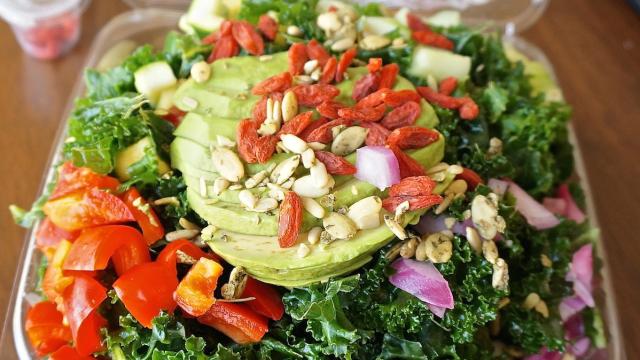Goji berries have only risen to prominence since the start of the 21st century, touted as a super fruit with myriad health benefits. But Chinese people have been enjoying goji berries for thousands of years as an important ingredient in teas and tonics. According to traditional Chinese medicine philosophy, goji berries strengthen Yin, improve eyesight and benefit the liver and kidneys. Modern science tell us these berries have all nine essential amino acids and are a good sources of vitamin A, vitamin C, iron, zinc and fibre.
Like many Asian ingredients coopted by Americans, goji berries have achieved mythical superfood status. They’re a regular fixture in juice bars, health food cafes and on the shelves at Whole Foods. The shriveled dried berries are treated like trendy, exotic raisins, sprinkled on everything from salads to acai bowls or mixed into granola.
As a Chinese American, I’m always exasperated by this. Goji berries are not raisins. That is how they are sold, because the delicate berries are so perishable that you rarely find them fresh. In Asia, goji berries are rehydrated before eating. It’s not that hard — you just add water and wait 20 minutes.
The idea of snacking on dried goji berries in trail mix or with yogurt parfaits would make as much sense to a Chinese person as munching on dried pasta. Dried goji berries are awkwardly chewy and get stuck in your teeth and they don’t taste nearly as good as they do once they are rehydrated. Once plump and softened, they’re so much more versatile, and are often used in Chinese cuisine to garnish savoury dishes like pea sprouts or crispy chicken. You can also fold them into rice or grain dishes or add them to salsa or dips. (If you favour extra creamy textures, try rehydrating the berries with your choice of milk or milk alternative instead of water.) The concept of rehydration isn’t unique to goji berries: other Chinese delicacies such as sea cucumber, bird’s nest and snow fungus are sold dried and require rehydration, and drying has been a useful method of food preservation for centuries.
The commercially available goji berry you know and love is Lycium barbarum, bright red orange and native to Ningxia. As with many foods, humans have widely propagated just this one variety, but there are many others, including Lycium ruthenicum, a wild black goji berry found in the Himalayas that resembles Szechuan peppercorn. Its deep purple colour signals potent antioxidants, but you’d be hard-pressed to find it in the United States.
Although demand for these fragile berries continues to grow, they have a short shelf life, and only a few American farmers have tried growing goji berries commercially. Goji Farm USA in Sonoma has been the most successful recently, but even they aren’t nationally distributed. All commercial brands of dried goji berries (like Navitas Organics and Viva Naturals) are sourced from China. Your best bet to locate the elusive fresh goji berry in the United States is at a California farmer’s market, or to to grow them yourself.
The goji plant is a woody shrub with thorns. It is part of the nightshade family and related to tomatoes. For such a rarified fruit, they are actually surprisingly easy to grow at home if you have a garden with well-drained soil. Look for Phoenix Tears or Crimson Star goji berry seedlings at a nursery to get started. Goji berries can withstand hot summers and cold winters and, so long as your garden doesn’t get too much rain, they have a long harvest season that begins in midsummer. If you can keep them safe from predators like aphids and birds, you’ll have a steady supply of fresh goji berries for months — no rehydration needed.

Leave a Reply
You must be logged in to post a comment.